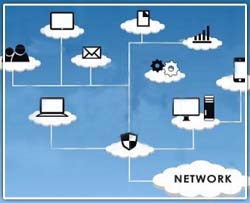The Emergence of Applications as King in the Cloud
 June’s Structure Conference in San Francisco was much more business and market dynamics centric in its look at the cloud than in previous years where the focus had always been on pure technology and services. This new focus gave coherence to the talks that had not been there before.
June’s Structure Conference in San Francisco was much more business and market dynamics centric in its look at the cloud than in previous years where the focus had always been on pure technology and services. This new focus gave coherence to the talks that had not been there before.
Unlike the previous year’s conferences where the preponderance of “vaporware” overshadowed all else, this year saw vendors with real products and services and customers who had experiences with private and public cloud deployments. What a difference a year makes.
One of the biggest changes was from a focus in 2009 on “virtual machines” and 2010 on “workloads” to the current emphasis on “applications”. Everywhere you heard talk about the importance of supporting application development, integrating applications and the operation of applications in the cloud. Truly in 2011 applications was King.
If you accept the concept that cloud computing is an operations model and not a technology, then this development makes perfect sense. In the stack there is nothing that is truly “cloud”. For cloud, management and monitoring protocols are not changed because it is how you operate and provision these elements that make it cloud. And the secret to this is to make them on demand and with the ability to scale appropriately.
Cloud is not just an operations model – it is an application centric operations model. As we have witnessed in the past year, IT is moving slowly towards an application-centric operations model and away from the old server centric model. The end result will be management and monitoring tasks that are defined by and targeted at the application itself instead of the infrastructure that is underlying.
This leads to an interesting corollary. If clouds are application-centric, then the perspective of the application must be considered when reviewing the problems resolved by cloud solutions. Or to look at it another way, it is a short-term solution to develop a tool specifically for virtual machine management in the cloud. Sooner or later managing a guest operating system in a virtual machine will become unworkable as the application begins to hide the containers in which it runs.
However a disruptive concept that has tremendous promise is the development of tools in the cloud model that have the development, deployment and operations of code and data, in essence displacing the old server-centric model of the past. In terms of operations, very few enterprises have the tools and processes for this concept. At least today.
There are a few application-centric tools for cloud around, such as EnStratus or RightScale. Although each of these is looking to provide tools for managing applications across disparate cloud systems, they tend to still be a trifle VM-centric. At least from this point of view. But then again most applications are built and deployed these days as an end product of this VM viewpoint.
There are several approaches one can take that would make an application-centric approach achievable:
- The development and use of application management tools for deployment of IaaS
- These should include both development platforms tools and cloud management tools (such as those illustrated above)
- Operation tasks should be organized around operations and not server groups
- When you create platforms as a service environment, ensure that they hide operation tasks, freeing you to focus on the application itself
- Make use of SaaS model vendors instead of building your own applications, so that except for the use of the application, your vendor operates all aspects of the application for you
Keep in mind that even with application-centric operations you will still require an ability to deliver the service that the application is deployed to and the infrastructure that supports this service. This includes the delivery of the application itself when deploying SaaS. Remember that managed services and data center operations become the responsibility of the cloud provider, whether it is public or private, and not the end user.
At the end of the day the center of this difficult cultural change for many IT departments is the concept of separating concerns in operations. The good thing is that this resulting change will give business units the true ability to focus on business functionality. This is the gain from making applications the center of the cloud computing universe.
Our newsletters and blogs are written to provide you with tools and information to meet your IT and cloud solution needs. We invite you to engage in our online community by following us on Twitter @GMOCloud and ‘Liking’ us on Facebook.


